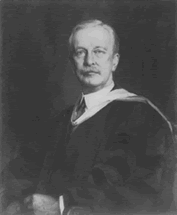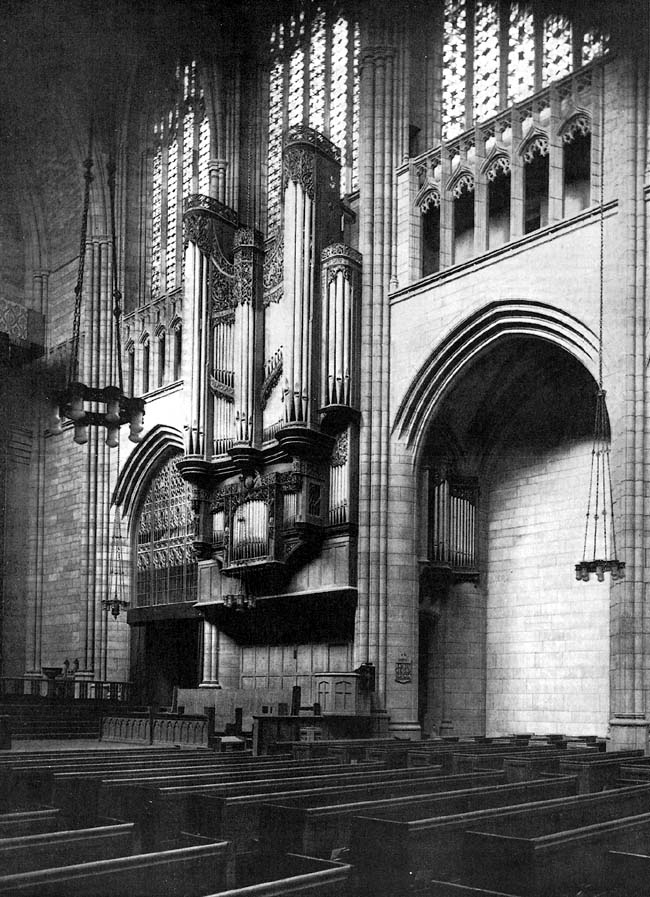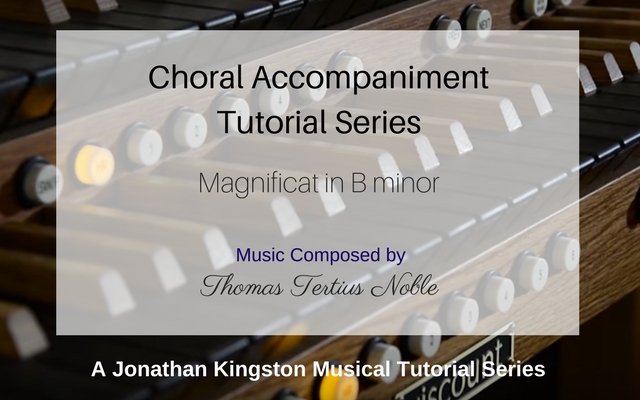Our second release for 2018 Choral Accompaniment series is Noble’s Magnificat in B minor. Here the organ has a relatively simple accompaniment with little opportunity for independent flair, but there is the chance for a wide range of registration variation as discussed below.
For our 2018 tutorial series we’re concentrating on the organ as a means of choral accompaniment. Church choral music was chosen to illustrate the accompaniment of various parts of the liturgy and to highlight some well-known anthems. The setting for these recordings, St Mary’s, Chalgrove, is a beautiful medieval church stunningly restored in 2015.
You can find out more about the choir, the organist, the church and the other five videos in our introduction to the Choral Organ Accompaniment Series.
Magnificat in B minor – T. Tertius Noble

Born in 1867, the excellently named Thomas Tertius Noble is probably best known for his position of organist at St Thomas’ Church on 5th Avenue in New York, where he remained for some 35 years until 1947. Prior to that he had been Stanford’s assistant at Trinity College, Cambridge, and had held posts at Ely Cathedral and York Minster.
At St Thomas’s Noble was instrumental in designing and installing the original 1913 Skinner organ, the church having been rebuilt in 1912, and he set up a choir school there in 1918. This created the foundations for the Anglican choral tradition that still holds sway today. As many will know, the famous Skinner organ, much revised and rebuilt over the century that followed, is finally being replaced by a new instrument from Dobson. The new organ retains the 1913 case.

Noble’s Evening Service in B minor, written in 1898, is widely sung and was dedicated to Sir George Martin (not the Beatles producer, but a former organist of St Paul’s Cathedral). The organ has a relatively simple accompaniment with little opportunity for independent flair, but there is the chance for a wide range of registration variation. The central section in particular, “He remembering his mercy”, allows an opportunity for ethereal sounds to support the quiet choral writing.
Advice on Choral Organ Accompaniment for Magnificat in B Minor
As Jonathan Kingston explains in his introduction, this setting of the Magnificat calls for many changes of registration and colour as the choral parts are varied and contrasting. Consider using lighter flute or diapason tone which is under expression for accompanying single choral textures, and coming back onto bolder choruses to support full four-part textures.
Depending on the voicing of your instrument, consider using the Great to four foot Principal only, as higher unenclosed harmonics can sometimes overwhelm, unless you’re playing for a large choir.
Watch the video of Thomas Tertius Noble’s “Magnificat in B minor” below. This is played by Jonathan Kingston on a custom built Envoy 23-S, which is a very popular church organ.
I have had a passion for church organs since the tender age of 12. I own and run Viscount Organs with a close attention to the detail that musicians appreciate; and a clear understanding of the benefits of digital technology and keeping to the traditional and emotional elements of organ playing.




Tremendous, many thanks, a friend asked me to find this piece for her Dad’s funeral.